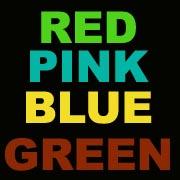 Synaesthesia can cause people to see coloured auras around friends or loved ones.© Punchstock
Synaesthesia can cause people to see coloured auras around friends or loved ones.© PunchstockShe sees colours emanating like haloes from her friends and foes. Blocks of colour form in her mind when looking at names of acquaintances, or even at words like 'love' and 'hate'. And no, she will not read your aura for a low introductory fee. She is not a charlatan, or a psychic - she's a synaesthete.
People with synaesthesia, perhaps one in 2,000 by conservative estimates, get two-for-one sensory experiences. They feel music, taste art, and often see colours around words or things. A new case study now raises the possibility that cases like this are the origin of the new-age belief in 'auras', a coloured emanation of energy that can be seen only by the spiritually in-tune.
G.W. is a young woman who sees colours around words or things only when the object has an emotional association for her. Many synaesthetes see letters as coloured, for example in the word 'love', 'l' might be green, 'o' might be cream-yellow, 'v' might be crimson, and 'e' royal blue.
“She went into a room, and it was a happy party, and the room took on a red tint.”
Jamie Ward
University College London
But instead G.W. sees the whole word 'love' as pink or orange because it is a positive word. She sees the word 'James', or James himself, as pink for the same reason: she likes him. Her case is described by Jamie Ward, a psychologist at University College London in the latest issue of Cognitive Neuropsychology1.
"She sees as things as being coloured, out there, in space," says Ward. Sometimes a colour would be attached to a whole area because of an emotion, he explains: "She went into a room, and it was a happy party, and the room kind of took on a red tint."
Colour test
To test whether G.W.'s experiences were genuine, Ward presented her with a list of names of acquaintances and words that she said evoked colour, and asked her to note down the hue she saw. A group of control subjects was also presented with similar lists of emotionally resonant words and familiar names and asked to assign each word a colour.
After a week, G.W. relabelled 86% of the words with the same colour, while the control subjects only did so for 46% of the words. Four months later, she was still giving the same colour 76% of the time.
Another test was derived from the classic Stroop test. In this, colour words are presented in another colour. For example, 'green" might be shown in red or blue.
When reading a list of words quickly, we stumble over such words. Or, when asked to tell the colour of each word as it flashes on a screen, we trip up when one of the words is a mismatched colour word.
 Mismatching colour names slows our reaction times. Synaesthetes experience a similar effect if numbers or names are given the 'wrong' colour.© Punchstock
Mismatching colour names slows our reaction times. Synaesthetes experience a similar effect if numbers or names are given the 'wrong' colour.© PunchstockFor G.M., these bumbling reaction times also show up for her synaesthetic words. If she sees 'James' as pink, and it is presented in blue, her reaction time goes down. This effect is subtle, and according to Ward, difficult to fake.
Hardwired
Synaesthesia most probably comes from a cross-wiring in the brain. Psychologist Simon Baron-Cohen of the University of Cambridge, UK, has suggested that it comes about when the densely connected infant brain does not prune itself rigorously enough as it grows. Ward suggests that the cross-wired areas in this case are the retrosplenial cortex, which is associated with emotion, and the V4 area, which has been shown to be involved in colour perception. The two areas are close together in the brain.
Could people with this condition be the original aura-readers? GW doesn't have any interest in the occult, but others may have. "You can understand how people who have this and were born in a different age would consider themselves able to see spiritual states," says Ward. They would see the colours, and assume they were coming from the people, not from their own brains.
Richard Cytowic, neurologist from Washington DC and author of a 1970s book on synaethesia that helped legitimize it as a neurological condition, says that emotion always seems to be part of the experience of synaesthetes. "Even a phone number is described as delightful and luxurious," he says, "and mismatches like an ad in the wrong colour are like fingernails on a blackboard."
He is intrigued by the idea that synaesthesia could explain auras, but doesn't see a way to prove it. "We don't have any way of knowing," he says. "But certainly synaesthetes are perceiving things that others aren't. It's an interesting supposition."
Ward, like many, is a bit jealous of those with synaesthesia, but the condition seems to be present from birth and impossible to learn. "The literature of aura reading - such as it is - claims that you can train yourself to read auras," says Ward. "This I do not believe. Synaesthesia is hardwired and biological."
University College London
-
References
- Ward J., et al. Cognitive Neuropsych., 21. 761 (2004). | Article |
